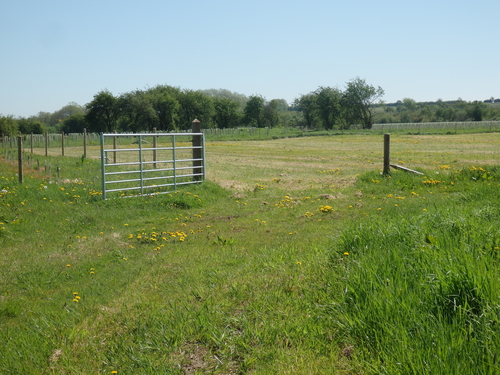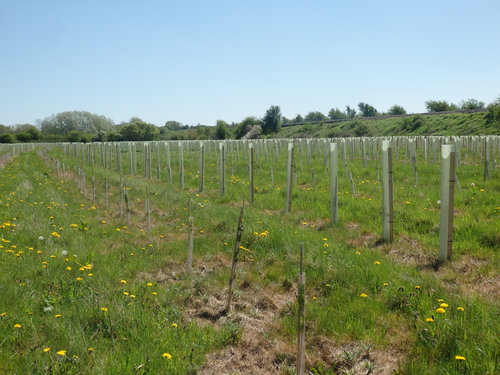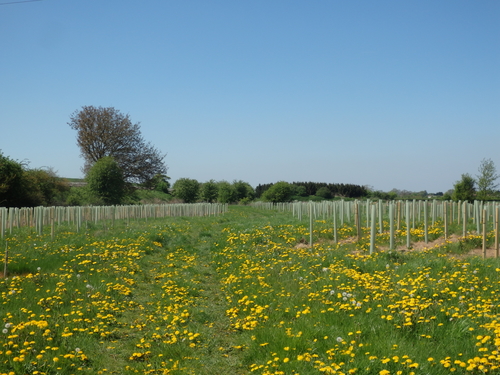Emilie's wood
Summary
About the site
Carbon Buyers - Why buy from this project?
Landowners - Why get involved in the WCC?
Who is involved?
How we go about it
Wider benefits
Summary
Unique ID: 104000000014115
Status: Validated / Active
Project Developer: James Lonsdale, LH Farming
Project Location: Aslockton, Nottinghamshire
Previous Land Use: Unused arable land between a watercourse and a railway
New woodland area: Gross area 11.1ha Net area: 8.7ha Open ground: 2.4ha
Species Mix: Native woodland: birch (40%), oak and alder (20% each), cherry (13%), whitebeam, rowan and field maple (2% each), hornbeam (1%).
Woodland Management: Minimum intervention
Estimated Sequestration: Total 8,806 tCO2e over 100 years, of which 7,485 tCO2e is for sale, 1,321 tCO2e will go to the WCC Buffer.
Start Date: Planting completed January 2018.
About the site
The project site is located on a thin sliver of land between the River Smite and a railway line, to the East of the village of Aslockton, Nottinghamshire. There is a well-used footpath which heads across the site to the riverbank.
 View across the site developed as Emilie's Wood: Spring 2018. Image: James Lonsdale
View across the site developed as Emilie's Wood: Spring 2018. Image: James Lonsdale
Carbon buyers - Why buy from this project?
This project will create a native woodland with recreation access for local walkers via an existing popular footpath. The woodland provides links to areas of existing woodland and the open spaces within the woodland will be managed for both access for people and for wildlife.
Landowners - Why get involved in the WCC?
As a landowner I have a passion for creating new woodlands and improving currently under-utilised land for the benefit of both people and wildlife. The possibility of extra income from sales of carbon turns a financially unviable project into one which can be undertaken.
Who is involved?
James Lonsdale is the landowner and project developer.
How did we go about it?
The owner purchased this site which was previously an arable field, but no longer in use and covered by low quality grass. With the help of a woodland creation grant and the possibility of carbon finance, the owner is creating a native woodland on this currently unused land.
 New trees planted at Emilie's Wood: 2018. Image: James Lonsdale
New trees planted at Emilie's Wood: 2018. Image: James Lonsdale
What are the wider benefits?
Wider Landscape
The new native woodland connects other local areas of existing woodland.
Scores (out of 5) for Emilie's Wood. Scores calculated using the WCC Woodland Benefits Tool.
Biodiversity
Emilie’s Wood will provide habitat for woodland species in an area of the country with low woodland cover. Glades and open areas are designed with wildlife in mind, providing habitat for butterflies and other species.
Water
Bordering the River Smite, this woodland has been designed to deliver improvements in water quality and to mitigate the risk of flooding in the area.
Community
This project creates new woodland on the outskirts of a Nottinghamshire village, providing recreation access in a developing native woodland.
Economy
The woodland is likely to produce a small amount of wood fuel as it develops, supporting diversification of the rural economy.

Emilie's Wood linking with existing woodland and hedgerow trees, 2018. Image: James Lonsdale


